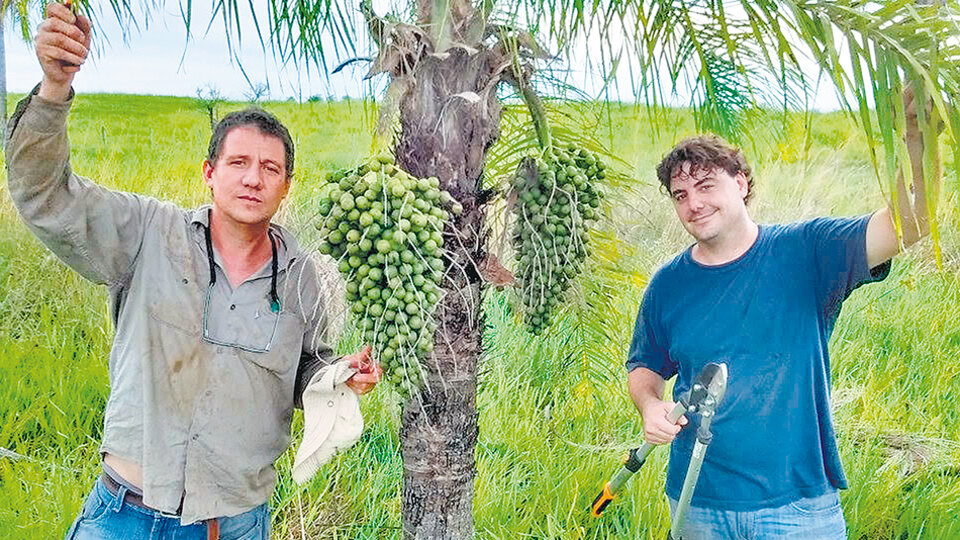
[ad_1]
Also known as "coconut tree", the palm tree Acrocomia totai, native to America and strongly implanted in the north of the country, in Paraguay and Brazil, could become a new place of production for the north-east of the country. Argentina, because of its high oil yield, ten times higher than that of soy on the same surface.
"At age five, the plant begins its reproductive stage and, after a few years, when it reaches its productive maturity, it can produce between 4,000 and 5,000 liters of oil per hectare. This is a crop whose yield is ten times greater than that of Argentina's main oilseed, soy, "says Diego Wbadner, professor at the faculty's Industrial Crops Chair. agronomy of the UBA (Fauba).
The use of this palm interests not only NEA residents, but also the industrial sector. "In the Corrientes, Formosa and Misiones regions," adds Wbadner, "very little soy is being grown, but Acrocomia could turn these provinces into oil and food producers providing the cosmetic and cosmetic industries. while adding bioenergy options. "
Everything that is produced by the palm tree can be used and marketed. The fruit, for example, has four components: skin, pulp, stone and seeds. From the seed comes an oil rich in lauric acid, which is requested by the cosmetic industry, but as it is not produced in Argentina, it is imported despite its high price. An edible oil, rich in oleic acid, is extracted from the pulp, which can be used by the food industry or as bioenergy for the manufacture of biodiesel or biofuel for aviation or biojet.
But its use does not stop there. "After extracting the oil from the seeds," says the researcher, "there is a flour rich in protein, similar to soy, but cheaper and suitable for animal feed. The protein content of flour pulp extraction is low, but it contains a large amount of starch and sugars, which, although it may also be suitable for animal feed, are generally used to produce bioethanol as a biofuel. "
The interest in supplying the biojet industry stems from the demand of the aerospace industry when it tries to reduce its greenhouse gas emissions. Part of the strategy is to use this type of fuel more and more, but there is not enough raw material today.
From the point of view of the environment, this palm also has other advantages, because it is a perennial crop that generates a permanent vegetation cover and a permanent use of resources during the year and which is also sourced from the region. "Areas already cleared for livestock or agriculture could be revegetated with this native palm which, in its shadow, would lead to activities such as horticulture or livestock," says the engineer. agronomy.
In the NEA, many producers are excluded from the system because they do not have the structure to deal with field crops. Wbadner's proposal also seeks to promote "rural roots" by offering alternatives to small-scale producers or family businesses that can not manage inefficient crops or that require a lot of infrastructure.
"Acrocomia would favor a new production system because, in large regions, it would require more manpower, but in the case of family plantations, the same producer could pay his salary and generate a salary. without hiring outside people, "says the researcher.
With all these data in mind, the group led by Diego Wbadner conducted the first plantation and research experiment with the School of the Agricultural Family (EFA) of the city of Santa Lucia, located in Corrientes.
We are beginning to evaluate the genetics of the native palm to promote the sowing and value-added of this palm which, in Brazil and Paraguay, has been commercially exploited with good results for several years.
* CTyS-UNLaM Agency.
.
[ad_2]
Source link
 Naaju Breaking News, Live Updates, Latest Headlines, Viral News, Top Stories, Trending Topics, Videos
Naaju Breaking News, Live Updates, Latest Headlines, Viral News, Top Stories, Trending Topics, Videos